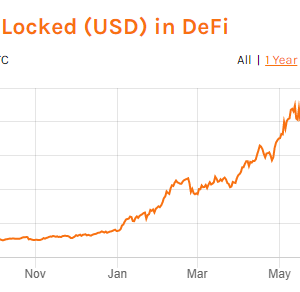Traditional investment VS quantitative investment
Different from traditional investment methods, quantitative investment does not use personal judgment to manage assets. Instead reflects the thoughts, experience, and intuition of investment experts in a quantitative model. Also, uses computers to help the human brain process large amounts of information and make investment decisions in the final.
The main feature of the quantitative fund is to deduce the theory of qualitative research through a quantitative model. With the help of the powerful information processing ability of the computer, a full range of investment objects that meet the “standard” are selected. Avoiding any “blind spots” when investing, and maximize capture “standard” investment targets. With the help of quantitative models, quantitative investment can avoid the interference of fund managers’ emotions and preferences on the investment portfolio, accurately reflect the investment ideas of fund managers, and maximize “rational” investment.
For traditional active investors, the limitation of decision-making breadth is reflected in the limitation of tracking the number of investment targets and the limitation of thinking variables in decision-making; quantitative investment has a greater investment perspective and breadth and can dealing and mining mass information processing quickly and efficiently in the whole market. Of course, the traditional active investment method has advantages in decision-making depth, so doing more in-depth fundamental research to make up for the lack of decision-making breadth is the key to success or failure. However, with the acceleration of market information transmission, many analysts seem to be more and more difficult to make up for the lack of decision-making breadth by facing the excavated fundamental data, and more in-depth analysis. At the same time, traditional investment managers are inevitably affected by the surrounding environment, and they often make trading behaviors that deviate from their judgments. Differently, quantitative investment is highly objective and disciplined. Rational investment by strict strategic rules can effectively overcome random and emotional behavior in the investment process.
Quantitative investment and active investment influencing factors
In the above figure, the diversity of investment strategies, high risk corresponds to event-driven and index enhancement; medium risk corresponds to growth stock investment and alpha strategy; low risk corresponds to value investment and arbitrage strategy. The left part is event-driven, growth investment, and value stock investment, which are active management strategies; index enhancement, alpha strategy, and arbitrage strategies are all quantitative. Strategies can be divided into strategies that are easy to use when there is a high-risk preference, strategies that are available when there is a medium-risk preference, and strategies that are available when a low-risk preference is used. At the same time, they are also divided into two parts: active and quantitative, one is determined by humans, and the other is determined by machines.
Why are the drawdowns of some funds relatively small but some of them relatively large? Why are the yields slightly different? Many factors affect the rate of return of quantitative funds.
For example:
First of all, some funds can be able to hedge by borrowing the CSI 500 ETF, without index hedging, its maximum drawdown will be relatively small; otherwise, sometimes due to the impact of index premiums and discounts, its maximum drawdown will come bigger.
On the other hand, for example, there are more investors in the entire company, and the composition of investors is relatively complicated. Sometimes, some new products are launched. If there is investment from a brokerage firm, and the brokerage firm that invests happens to be the main product of this product. Underwriting will result in some products not being launched, which will lead to differences in overall revenue.
In addition, whether the hedging end can borrow spot hedging will also lead to some differences in returns. There are many other situations, which are relatively complicated, and there are two biggest impact factors.
The whole quantification, if it is hedging, the drawdown is relatively small, and the return is relatively stable. However, quantitative hedge funds are not comparable to funds that are not hedged at all. The risk appetite between the two is completely different. Quantitative hedge funds may be relatively more investors who like bank wealth management and trusts. The unit price of a generally quantitative investor’s investment (the amount purchased by a single customer) often far exceeds the amount purchased by a single customer of active products. Why? It is mainly because there will be many high-net-worth clients who need more stable financial management, and their risk-return preferences are relatively low.
Relative to the annualized volatility, the net worth volatility measures property changes. The overall volatility can be controlled at around 5.5%; If the index is strengthened, it is not hedged at all. Its overall volatility can reach 26%, and the risks are indeed different.
From this year’s point of view, because the market has risen relatively well this year, We must like active products with enhanced indexes or no hedging at all. For example, in 2018, when the market was not good, this series of products for quantitative hedging was basically in short supply. Therefore, at different times, investors will have their risk appetite. If their own money is relatively limited, they may switch between the two. But in fact, it’s quite difficult to do like this. Because you are judging the rise or fall of the market, and for other people, some of the funds are used for speculation, and the other part of the funds is relatively low in risk appetite. This can do it together.
Quantitative risk control
Quantification itself has a natural risk control. Some quantification models will choose 300 to 400 stocks for a basic strategy. Generally speaking, an entire fund will have two or more strategies. Under such circumstances, the number of stocks can reach 600 to 700, and the high degree of diversification of positions has been adopted to avoid the black swan risk of a lot of individual stocks. In addition, stock index futures or 500ETF are used to hedge, to help investors filter out the risk of market fluctuations. The stocks are diversified, and the market risk is hedged. Under such circumstances, the actual rate of return and risk control process is done relatively sufficiently.
Of course, some investors do not want the volatility of the market to be waved away. In this case, his better choice is the index-enhanced series of products. As far as hedging products are concerned, if a few hundred long combinations cannot run better than the index, hedging is meaningless. Because hedging still has to deduct discounts and other things, it makes sense for the long series to outperform the index. The only difference between these two products is whether you are hedging or not. The long end is the same, so the choice of these two products depends entirely on the investor’s risk appetite.
Now, you may have a question. Why have so many quantified private placements rise so quickly in recent years? The data shows that many of the top active private equity in the market has been in operation for almost 10–13 years. The top average annualized rate of return is about 19% (annualized), and the best can achieve an annualized rate of 22% (private placement over ten years). Quantitative private equity in the market nowadays will be relatively late to be established. Therefore, in five years, the average annualization of the top five companies can reach nearly 25%, from the perspective of index enhancement alone. There are certain advantages to this process.
Of course, different people have many different opinions in this regard. For example, some people think that quantification is done by machines, and they don’t know whether they should be trusted or not. On the other hand, he may think that the active product has investment managers who constantly help him with psychological massage, which will let investors know his thoughts and ideas, which is more conducive to investors to understand the fund. The interaction between people has an advantage.
However, from the data point of view, quantitative index-enhanced products are also constantly rising. For some investors, the customers who are partial to science and technology are often more acceptable if we simply look at the yield and the performance of hundreds of stocks; the customers who are partial to the perceptual category may still prefer traditional active private equity.
But, indeed, some funds in the market have gradually paid attention to quantitative private equity. The performance made by hundreds of stocks is statistically more convincing. Under such circumstances, they will also be willing to believe. That’s the reason why index enhancement strategies, including quantitative hedging strategies, have emerged rapidly in recent years. Everyone takes what they need.
Take Tesla as an example. Everyone said that Tesla’s autopilot has a problem, involving a personal accident or what kind of situation, so the news may become serious. People naturally don’t trust machines, but the fact is that Tesla’s autopilot system (data shows) has a car accident rate of 1/200 that of human driving, and humans may gradually accept it by then. The quantification initiated by the machine is assured and recognized by people when the rate of return is much higher than that of manual labor. This is continuous development and it is also a process which everyone gradually understands and agrees. The rise of quantification and the future of quantification still have a long way to go, but I believe that quantification will indeed be very competitive in the future. After all, a quantified neutral product is a relatively low-risk and medium-yield product. It is very attractive for many high-net-worth customers. Its capacity is relatively large because it has passed hundreds of A combinations of stocks, so the overall strategy capacity is relatively large.
Take Tesla as an example. Everyone said that Tesla’s autopilot has a problem, involving a personal accident or what kind of situation, so the news may become serious. People naturally don’t trust machines, but the fact is that Tesla’s autopilot system (data shows) has a car accident rate of 1/200 that of human driving, and humans may gradually accept it by then. The quantification initiated by the machine is assured and recognized by people when the rate of return is much higher than that of manual labor. This is continuous development and it is also a process which everyone gradually understands and agrees. The rise of quantification and the future of quantification still have a long way to go, but I believe that quantification will indeed be very competitive in the future. After all, a quantified neutral product is a relatively low-risk and medium-yield product. It is very attractive for many high-net-worth customers. Its capacity is relatively large because it has passed hundreds of A combinations of stocks, so the overall strategy capacity is relatively large.
Quantitative investment options
For investors with a relatively high-risk appetite, the future index enhancement will have a strong impact on all active fund managers. The top active fund managers will do a certain style right in a certain year. The rate of return is difficult to surpass, but he may not be the top fund manager every year.
However, based on the top index enhancement products of the past five years, there may be an annualized return of 25% each year in the past five years. This level can already exceed 90% or even 95% of active fund managers. Therefore, in the long run, index-enhanced products will show strong vitality and competitiveness in the future. After everyone gradually recognizes, the choice of quantitative products, whether hedging or index enhancement, actually depends on the investor’s risk appetite.
Quantitative investment methods can be widely used in the entire investment process, from top to bottom asset allocation, industry allocation, style allocation, to bottom to top quantitative selection of targets, etc.
Quantitative investment is not the opposite of fundamental analysis. 90% of the models are based on fundamental factors while taking into account technical factors. Therefore, it is not a technical analysis, but a logical investment method based on an in-depth understanding of the market.







